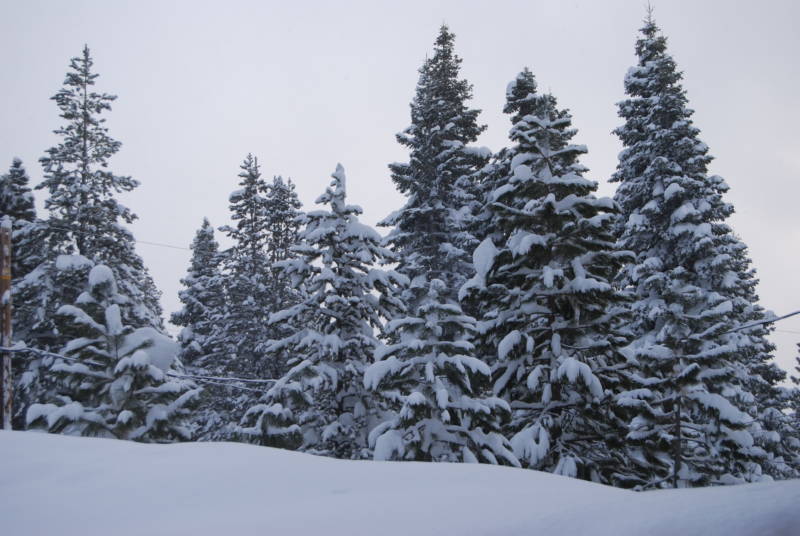
Surveyors from the Department of Water Resources strapped on their skis today and headed out to measure the status of the Sierra snowpack for the fifth and final time this season. As expected, they reported good news for the state’s water supply.
It’s been a big year for the snowpack – the biggest since 1995 – and the snow’s water content is about 180% of what’s “normal” for early May. The spring melt has already begun, so there’s less snow than there was month ago. Historically, early April is when the snowpack is at its peak, as it was this year. And yet, the current water content of the snowpack is still 50% higher than the historic average for April first.
All this water has prompted officials to project water deliveries of 80% of requests from farms and towns served by the State Water Project this year. That’s the highest percentage since 2006. Last year just 50% was delivered.
And yet when I asked DWR snow survey master Frank Gehrke if this year’s snowpack was record breaking, he chuckled a little and said, “Not even close.”
He said that today, the snow at Philllips Station, where he conducted one survey, had 33.7 inches of water content. In 1995, the water content on May first in the same spot was 44.7 inches of water content. The maximum on record for early May, he said, was 64.7 inches.
“We went almost 6 weeks with no storm activity, and you’re not going to break any records when you go six weeks without any storms,” said Gehrke.
Yet, there is a lot of snow up there, and Gehrke said it will take awhile before it disappears from higher elevations. In the meantime, the melt rate will increase with warmer temperatures and clear sunny days.
That, he said, could pose a flood risk in certain parts of the state, although he deemed it unlikely. What could toss a “monkey wrench” into that, he said, would be late-season storms bringing more precipitation that could tax the state’s storage systems.
“You’re coming in with reservoirs that have a lot of water in them already and with this large of a snowpack, there are some management issues,” he said.
Most of the state’s reservoirs are above normal for this date, and the state’s two largest, Oroville and Shasta, are both more than 90% full.

